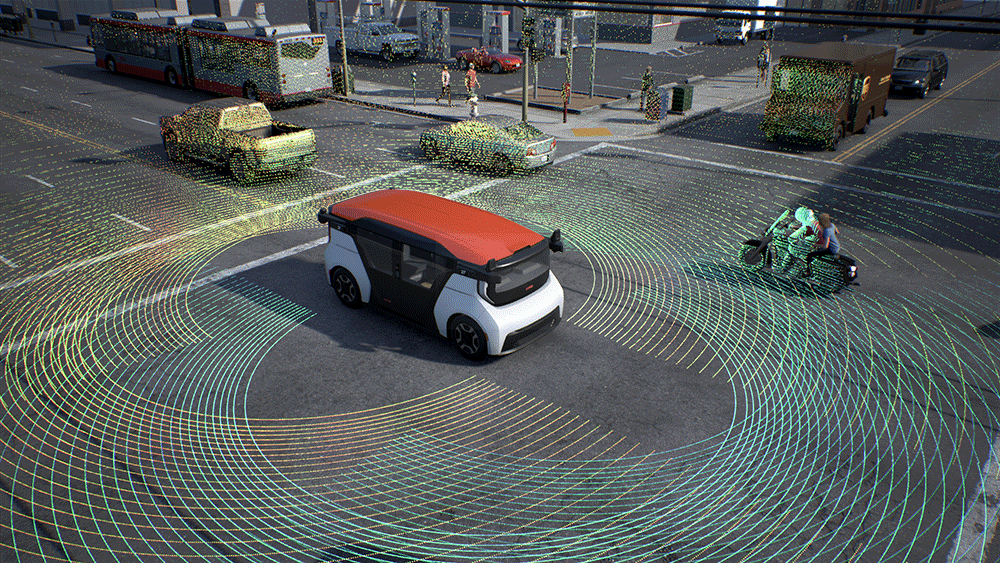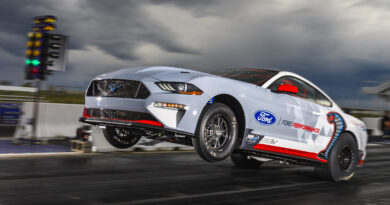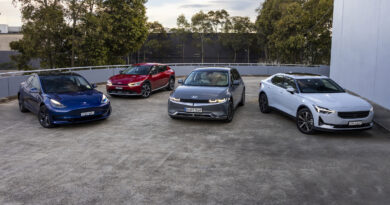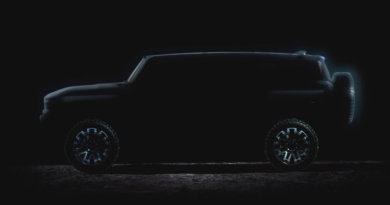650km range for made-in-Detroit electric Chevrolet Silverado
The long-promised Chevrolet Silverado EV will travel upwards of 400 miles – about 650km – between charges, according to General Motors president Mark Reuss.
The former Holden boss confirmed the all-electric pickup truck will be produced alongside the recently revealed GMC Hummer EV SUV at the company’s Detroit-Hamtramck facility that is undergoing a US$2.2 billion ($2.9 billion) refurbishment to manufacture EVs.
EV ute overload: Every electric pickup truck coming soon
UPDATE: Chevrolet Silverado EV to break cover early in 2022; focus on tech
Now known as Factory Zero – it will not only produce zero-emissions vehicles but has a “focus on sustainable manufacturing” – the factory will also produce the Cruise Origin, a futuristic autonomous ride-sharing cube GM is developing in partnership with Microsoft as part its growing list of promised electric vehicles.
For now, GM has only shown off the badge of the all-electric Silverado, although the company has confirmed it will be built from the ground up as an EV.

That’s significant because it allows GM to leverage the much-hyped Ultium architecture that includes next-generation in-house designed lithium-ion batteries.
No GM vehicles currently on sale – including the Bolt EV and upcoming Bolt EUV – use Ultium technology, the company instead reserving it for soon-to-arrive newcomers such as the Hummer SUT and Hummer SUV. They will also be used for the Rolls-Royce-fighting flagship Cadillac Celestiq.
The Silverado would logically use some of the drivetrain components from the Hummer EVs and GM has previously stated it will produce Ultium batteries in a capacity up to 200kWh.
However, whereas the Hummer is clearly being positioned as a Tesla-fighting modern EV – complete with “Watts to Freedom” mode and Bose-developed futuristic engine sound – best guesses are that to utilise the Silverado name GM would ensure it lives up to the tradition of the brand.
That circa-650km range for the Silverado EV would likely come from the maximum 200kWh battery pack.
While the 650km range is more than most buyers will need on a daily basis, it’s clearly been designed to allow for heavy duty load carrying and towing – two things many owners purchase full-sized pickup trucks for.
EV range can be slashed by half – or more – when towing and hauling heavy things.
As well as improved battery chemistry for higher energy density than current batteries, Ultium is claimed to allow shorter development times by around 50 percent, with vehicles now claimed to be developed in 36 months (three years). GM has also said Ultium batteries will also be upgradeable.
“The vehicles coming from Factory Zero will change the world, and how the world views electric vehicles,” said Reuss in a statement.

“The GMC Hummer EV SUV joins its stablemate in the realm of true supertrucks, and Chevrolet will take everything Chevy’s loyal truck buyers love about Silverado — and more — and put it into an electric pickup that will delight retail and commercial customers alike.”
While the Silverado EV will bear no resemblance to the existing Silverado petrol and diesel models beneath the skin, clearly there will be overlap between the two from a marketing and styling perspective given the shared Silverado name.
The Silverado is big business for GM, accounting for about 600,000 sales annually – still short of the class-leading Ford F-Series, which has also promised an EV version.
A big part of that success is fleet sales and it seems Chevrolet is keen to shift some of those into the EV space.
“Retail and fleet versions will offer customers a variety of options and are expected to be in high demand,” the statement from General Motors read.
In tailoring some versions of the Silverado EV specifically to fleets GM would be able to fend off imminent attacks by the likes of Lordstown and Bollinger, each of which is planning an attack on fleet purchasers.
The Silverado is also a highly profitable vehicle, one GM hopes to shift into the electrified space with the Silverado EV.
GM has promised its entire light-duty vehicle range will do without petrol and diesel engines by 2035. However, that mention of “light-duty” cleverly leaves big pickups such as the Silverado out of the EV equation, suggesting General Motors is still planning on ICE versions beyond that 2035 cutoff for its cars and SUVs.
As one of almost 20 electric utes promised or currently under development, the Silverado EV could arrive into a crowded market.
No word yet on when it will arrive, although it’s unlikely to be prior to 2023.
As for the chances of the Silverado EV being sold in Australia, a spokesman for the recently formed General Motors Specialty Vehicles (GMSV) would not say. He told EVcentral that the focus was on launching the soon-to-arrive Corvette sports car – a car that will eventually be an EV – and updated Silverado ICE lineup. While Corvettes will come out of the factory with the steering wheel on the right, GMSV currently converts Silverados to right-hand drive at a factory in Melbourne. Given the layout of an electric vehicle it should theoretically be easier to switch the steering wheel from one side to the other.
The jury is out on whether the advantage will be on the foot of start-ups such as Rivian, Lordstown and Bollinger or whether traditional large truck manufacturers such as Chevrolet and Ford will have the upper hand.
And, of course, there’s Tesla, which is currently reworking its radical Cybertruck to make it roadworthy rather than just Instagram-worthy.
There’s also conjecture as to whether the new breed of EV utes will be on the shopping lists of buyers who have traditionally demanded fuel-sucking V8s.




